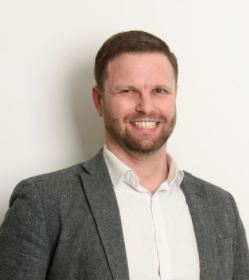Insights
What F1 can teach our industry.
Holistic design.
“We cannot win the F1 title with a customer engine” – Ron Dennis OBE
Formula 1 and construction are two engineering disciplines that feel a world apart. One involves state of the art manufacturing, high speeds and adrenaline, the other is seen by many as sometimes slow and traditional.
But construction and F1 are not as far apart as you may think…
An integrated team.
Designing an F1 car requires a team of designers who come from a range of disciplines: engines, suspension, cooling, aerodynamics all have to be integrated and optimised for peak performance.
Construction is similar; architects, structural engineers, building services engineers, acousticians, daylighting specialists, sustainability consultants must all come together, integrate as a team and optimise a building solution.
That’s all very interesting, but how do customer engines in F1 relate to construction?
Formula 1 is a sport driven by optimisation. Every component is engineered to harmoniously with every other item. When you purchase an engine from somebody else, you cannot integrate or optimise it as well as the manufacturer.
As we move to our zero-carbon future, construction will increasingly become about optimisation. The last 20% of emissions will be increasingly difficult to manage and we will need to optimise building performance.
Take an inner-city school for example. Opening windows are accepted as the correct solution for school buildings. But the acoustician says “we can’t open the windows, it’s too noisy” and the air quality expert says “the outdoor air is polluted”. Meanwhile the engineer cries “I need to open the windows for ventilation” and the lighting designers and wellness leads want “bigger windows for daylighting”, bigger windows that cause overheating.
How can we optimise all of these conflicting requirements if we are metaphorically “buying our engine”? Each design requirement is conflicting with another, yet each will have a significant impact on performance.
The answer can only be in closer integration, with the Engineer, the Air Quality Assessor, Acoustician, Lighting Designer, Wellness assessor, and sustainability consultant working together using a common toolkit.
Returning to our inner-city school example, our Hoare Lea teams of experts routinely join together to address overheating, noise, air quality and daylighting. We optimise the design to maximise daylighting while controlling overheating, to limit noise intrusion while maintaining natural ventilation, controlling outside air pollution while minimising energy usage.
As with F1 engines, building optimisation does not end.
We continue to develop new tools and learn new techniques that allow us to provide more and more integration and we strive to provide winning results that cannot be achieved by simply ‘buying an engine’.
Maybe F1 and Construction are not so different…
Read our interview with former F1 world champion Nico Rosberg here.
